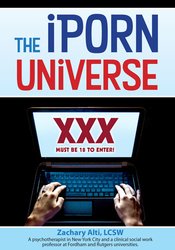Description
Pornography these days is so plentiful, easy to access, and often free that it’s affecting the therapy field’s sex and porn addiction paradigm. Like others with process addictions to things like social media, gambling, and shopping, clients suffering from porn addiction often didn’t know they were at risk until they got caught in an addictive cycle: one, that in this era of high-speed internet and smart phone technology, can be intensely difficult to break.
CPD
CPD
- PESI Australia, in collaboration with PESI in the USA, offers quality online continuing professional development events from the leaders in the field at a standard recognized by professional associations including psychology, social work, occupational therapy, alcohol and drug professionals, counselling and psychotherapy. On completion of the training, a Professional Development Certificate is issued after the individual has answered and submitted a quiz and course evaluation. This online program is worth 2.0 hours CPD for points calculation by your association.
Objectives
- Articulate for clients the differences between porn use and the signs and symptoms of addiction.
- Characterize and address the trends of modern porn addiction that can negatively affect clients, such as interpersonal conflict, inability to become aroused by real sex, dysphoria, an increase in thrill-seeking behaviors, and self-isolation.
- Analyze the neurobiological mechanisms of behavioural/process addictions, and integrate salient treatment approaches into your practice, including CBT-Internet Addiction, holistic lifestyle attunements, and elements of Mindfulness-based Stress Reduction.
Outline
For the Purposes of Psychoeducation, Articulate for Clients the Differences Between Porn Use and the Signs and Symptoms of Addiction
- Identify when usage becomes problematic.
- Examine how non-problematic usage can be tracked to prevent a slip into addiction.
For Assessment and Treatment Planning, Identify Which Modern Porn Addiction Trends Are Most Affecting Your Clients’ Well-Being
- Recognize what deficiencies in lifestyle may be contributing to problematic levels of porn usage for your clients.
- Identify inflamed emotional needs which may be fueling problematic porn for your clients.
- Discover the common trends of porn addiction, based on Mark Griffiths’ research into the Domains of Behavioral Addictions (Salience, Mood Modification, Tolerance, Withdrawal, Conflict, and Relapse).
Outline the Neurobiological Mechanisms of Behavioral/Process Addictions and Their Treatment Implications
- Explore how behavioural/process addictions affect the brain's reward circuits.
- Discover how behavioural/process addictions affect brain development.
- Examine how behavioural/process addictions differ from substance-based addictions.
- Limitations of current research – case study model and paucity of research base
Utilize Clinical Strategies That Integrate Modern Treatments for Porn Addiction
- Explore the effectiveness of traditional relational approaches on the underlying causes of behavioural/process addictions.
- Discover Cognitive Behavioral Therapy-Internet Addiction (CBT-IA) as the first direct treatment for behavioural/process addictions.
- Review Holistic lifestyle attunement strategies.
- Integrate Mindfulness-based Stress Reduction (MBSR) into a behavioural/process addiction treatment program.
Target Audience
- Psychologists
- Physicians
- Addiction Counselors
- Social Workers
- Marriage & Family Therapists
- Nurses
- Other Behavioral Health Professionals

